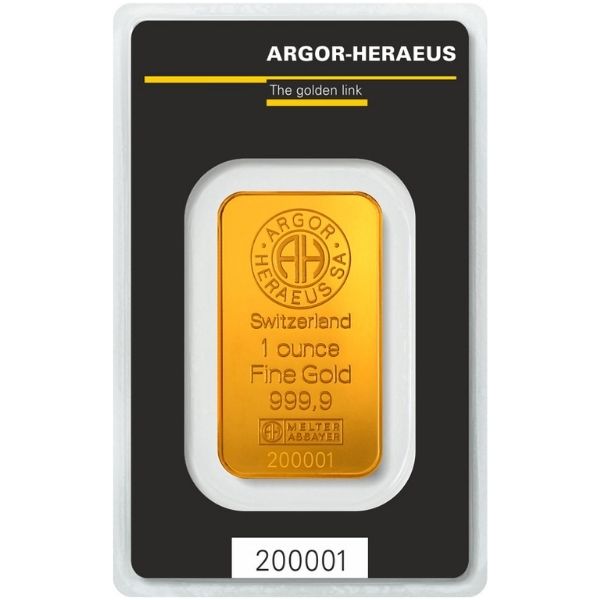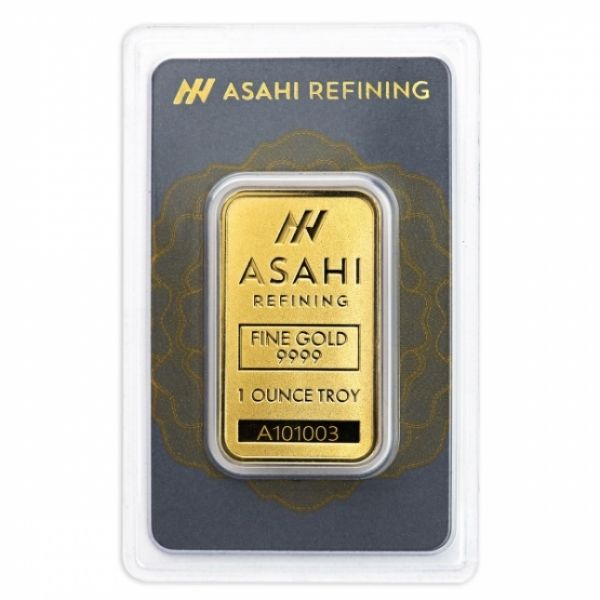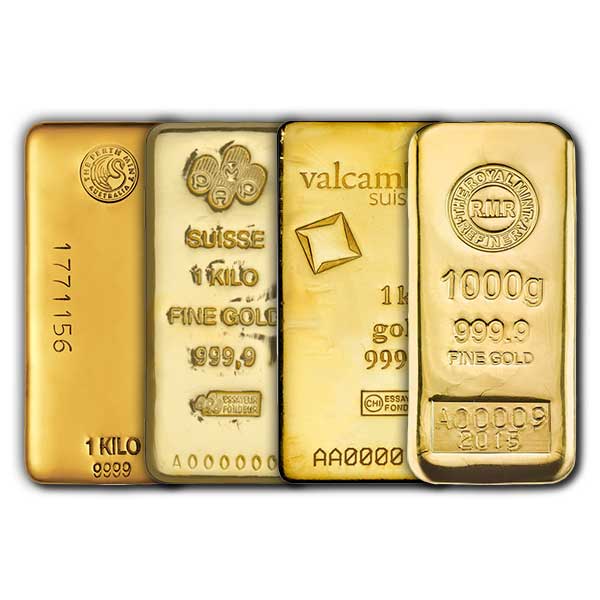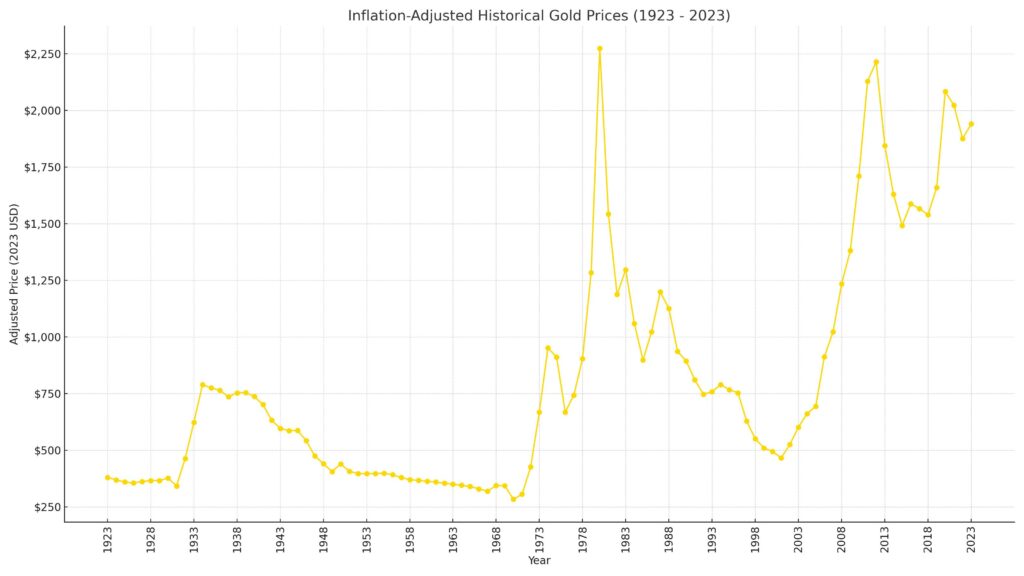How to Buy Low Premium Gold | Investing on a Budget

At a Glance:
-
- All gold coins and bars are sold at premiums over spot price.
- Gold bars offer the lowest premiums over spot in the gold industry.
- To maximize savings, investors can invest in large gold coins and bars.
How to Buy Low Premium Gold – Investing on a Budget
To gold stackers, premiums are a necessary evil. Many investors consider paying precious metal premiums a waste of money. High gold premiums mean an inflated total investment cost, which eats away at investor profits. Unfortunately, premiums are an unavoidable part of investing in gold. Every gold product is sold at some sort of premium over melt value.
Finding low premium gold is the main goal of gold stackers. A gold stacker’s objective is to get as much gold as possible for their cash. By paying inflated premiums, gold investors waste money they could use to add more gold to their portfolios. By buying low premium gold, stackers can grow their collections without losing money paying unnecessary fees.
The good news is that not all gold products are sold at high premiums. Finding low premium gold is surprisingly easy – if you know where to look. Today’s guide is all about how to buy low premium gold.
What Are Gold Premiums?
Gold premiums are small fees added to the melt value of gold items. Melt value refers to how much a gold coin or bar would be worth in precious metal content alone. The additional cost of a gold product beyond this melt value is called a gold premium.
Every gold product comes with some sort of premium fee. Dealers charge premiums based on demand, cost of production, and a few other factors. When demand or production cost for a given gold coin is especially high, expect to pay a higher premium over spot price.
Is it Possible to Buy Gold at Spot Price?
It is not possible to buy gold at spot price. When you buy gold, you’re paying for more than just the precious metal a coin or bar is made from. Like any other commodity, gold products cost money to produce, store, and ship. These costs are passed onto the consumer, which results in the premiums investors pay for gold.
While it isn’t possible to buy gold at spot price, investors can learn how to buy low premium gold. Cutting down on costs through low premium gold is a great way to maximize savings and profits.
Low Premium Gold – Cheapest Gold Products to Buy
Investors will find the lowest gold premiums in two main product types: gold bars and large gold items.
Gold bars are cheap to produce compared to gold coins and usually feature simpler, more basic designs. Because of the lower production costs, gold bars are often sold at lower premiums than gold coins.
Premiums tend to decrease as the size of an investable gold bar increases. The cheapest way to buy low premium gold is to look for large gold bars or coins. Fractional gold is cheaper than full 1 oz gold coins and bars, but fractional gold also comes with some of the highest premiums in the precious metal market.
Gold Bars – Gold Near Spot Price
To buy low premium gold, we recommend gold bars. Gold bullion bars don’t typically feature intricate, highly detailed designs. Simpler designs means that gold bars are cheaper to produce than complex, beautiful gold coins. This lower production cost leads to cheaper user-end prices. Investors can save money by putting their cash into cheap gold bars.

Not all gold bars are considered low premium gold. Certain rare, beautiful, or in-demand gold bars are sold at premiums comparable to gold coins. The PAMP Fortuna 1 oz Gold Bar is a good example of a gold bar with higher premium costs. Because of its intricate designs and exceptional collectability, this gold bar tends to sell at a higher premium than other gold bars of the same weight.
Gold bars are one of the best ways to invest in low premium gold. Investors should know that gold bars don’t usually offer the numismatic value and collectability associated with gold coins. Investing in gold bars means sacrificing collectability and beauty for affordability.
Gold Bars are Cheaper Than Gold Coins
As a general rule, gold bars offer considerably lower premiums than gold coins. Gold coins come from sovereign mints, which means they offer an impeccable level of detail and consistency. This consistency is great for aesthetic appeal, but also results in higher production costs. Since sovereign mints spend quite a lot of money to produce popular gold coins, expect to pay high premiums for these highly collectable items.

Gold bars are different. Certain gold bars are beautiful and cost a lot to produce. Other gold bars are basic, simplistic, and cost very little to manufacture. Simple gold bars still contain pure gold and are perfect for investors wondering how to buy low premium gold.
Are Gold Bars a Good Low Premium Gold Investment?
Gold bars are the standard for budget investors searching for low premium gold. If paying extreme premiums to access quality gold bullion is your goal, consider buying gold bars. To really maximize your savings, take a look at “Any Mint, Any Condition” (AMAC) gold bars. Gold bars in less-than-perfect condition are often sold at low premiums over spot price.
Gold bars aren’t the only way to put your money into low premium gold, though. Finding gold coins at low premiums over spot price is also possible – if you know what to look for.
Investment Size and Premium Costs
Whether you’re looking for bars or coins, the size of your investment impacts the amount of a premium you’re going to pay. The lowest premium gold products on the market are usually large. The bigger the product, the lower the premium – this is a common rule of thumb used by budget investors.

Large gold bars and coins can cost quite a bit of money, especially when investors consider total cost. Total cost refers to the full amount of cash required to purchase a new gold coin or bar. By adding relevant premiums to the melt value of a product, investors can determine its total cost. Most gold dealers display the total cost of their gold products on each product page.
Large Gold Products for Budget Investing
Despite higher total costs, large gold products offer a hidden benefit: low premiums. For mints and refiners, producing a massive gold bar is cheaper than minting dozens of smaller specimens. Dealers push these savings onto the consumer, resulting in lower premiums for larger products.
If you’re a gold stacker working with a large budget, it’s tough to find premiums lower than you’ll pay for large gold bars. Multi-ounce and kilo gold bars are some of the most affordable products in the industry – at least as far as premiums are concerned.
Investors wondering how to buy low premium gold should think big. The largest gold products on the market typically offer the lowest premiums available.
Comparing Low Premium Gold Options
We’ve covered two strategies for finding low premium gold: gold bars and large gold products. It can be tough for new stackers to decide the right type of gold to buy. Let’s take a look at a quick comparison of the two most popular budget gold investment options:
| Gold Bullion Bars | Large Gold Products |
|---|---|
| Low Premiums (Sometimes) | Low Premiums |
| Pure Gold Bullion | Pure Gold Bullion |
| Limited Designs and Availability | Wide Variety |
Timing Gold Investments – How to Maximize Savings
Gold premiums ebb and flow. During periods of peak demand, premiums skyrocket for nearly every gold product. When gold’s spot price decreases or demand subsides, investors may be able to easily buy low premium gold without breaking the bank.
Try to time your investments with major market movements. In particular, consider investing in gold during periods of low demand. When the traditional economy thrives, demand for safe haven assets like gold decreases. During low demand periods, dealers tend to cut premium costs in order to liquidate their stock. When premiums are low, it’s time to buy!
Establishing relationships with popular gold dealers is another way to maximize your savings. Hero Bullion frequently runs promotions featuring low premium gold. Subscribing to our email list at the bottom of this page can help you stay ahead of the curve as you search for low premium gold.
When Was Gold Cheapest?
Historically, gold’s all-time low came in September of 1970. That year, gold traded for a record low of $289.41 per ounce in today’s money. We haven’t seen gold prices that low since, but gold’s lowest price ever can shed some light on how gold prices move.

For the most part, gold’s lowest prices have happened during periods of a thriving traditional economy. Because gold tends to perform well during periods of economic strife and recession, the precious metal often crashes when traditional economic indicators are positive.
When the traditional economy looks good, investors tend to put their money into traditional assets like stocks and bonds. This decreases demand for gold coins and bars, and dealers may adjust premiums to get rid of their excess inventories.
To buy low premium gold, try to wait for periods of stagnating demand. If demand for gold is low, investors can save money by buying gold coins and bars at low premiums.
What’s the Best Way to Buy Low Premium Gold?
Learning how to buy low premium gold requires investors to do some research. Timing the market, finding the right products, and looking for deals are all good strategies budget investors can use to cut down on premium costs.
Gold bars and large gold products are two common ways to invest in low premium gold. Hero Bullion sells a wide range of cheap, low premium gold bars and coins to help you stack gold without breaking the bank!
You might also be interested in:
About The Author
Michael Roets
Michael Roets is a writer and journalist for Hero Bullion. His work explores precious metals news, guides, and commentary.
